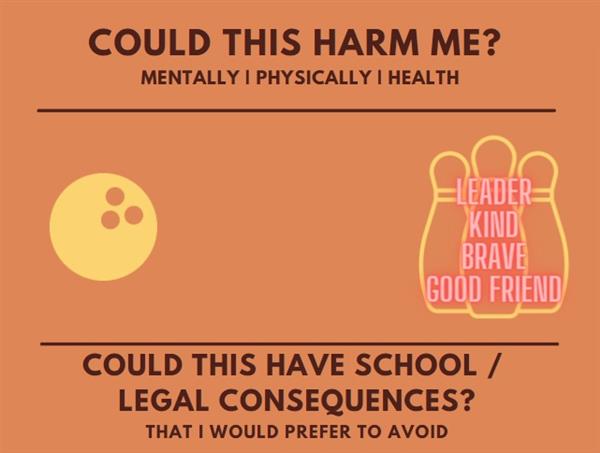Risk-Taking
Ms Alana Koch | Head of Wellbeing | Grammar News | 18 March 2022
Recently I spoke to Year 9 about how to make choices involving risk-taking. I didn't set out to tell them what they should or shouldn't do with regards to risk, but rather gave them a framework to think about risk.
Risk has a bad name, however, not all risks are bad. How does a baby learn to take its first steps without taking that risky first step? There are many benefits to positive risk taking such as gaining confidence and new skills, creating change and being proud of yourself. However, some decisions that are risky can have negative consequences, which we are all too familiar with, such as injury, school/legal consequences, embarrassment and shame.
The first thing that makes it extra difficult for teenagers to decide if something is a positive or negative risk is their developing brain. It is important to know that a teenager's brain is not fully developed and is undergoing a 'prune'. The wise, decision making part of the brain (the prefrontal cortex) is remodelled last. So instead, a teenager often relies on the amygdala to make decisions and solve problems. I call the amygdala, the "emoji" part of the brain as it is associated with emotions, impulses and aggression.
The second reason it is hard for teenagers to make good decisions about risk is that when they are around friends it activates the "reward system" in their brain. That leads them to pay less attention to the potential rewards of a risky choice and relatively less to the potential costs.
So then, how does a student decide whether an activity is a positive or negative one?
I encouraged students to think of taking a risk like going bumper bowling. If the risk hits the pins - that is, what kind of person they want to be, for example, a leader, kind, brave, good friend - then perhaps it is a good risk to take! However, because teenagers struggle to think about who they want to be in the future, they should have their "bumper" guard rails down:
- The first bumper is - "Could this harm me?" - mentally, physically, health-wise - and do you want that?
- The second bumper is - "Could it have school or legal consequences?" - that you would rather avoid?

Hopefully if they consider these "bumper" questions, it will guide their decision making and keep them on track to be the person that they want to be. I encourage you to talk about taking risks with your children from a young age and weigh up these two "bumper" questions with them and model decision making. Modelling decision making will help them rehearse taking risks and may prevent risky behaviour.
For further information on risk taking, you can read the following articles: Brain Development in Teens; Risky Behaviour in Teens.